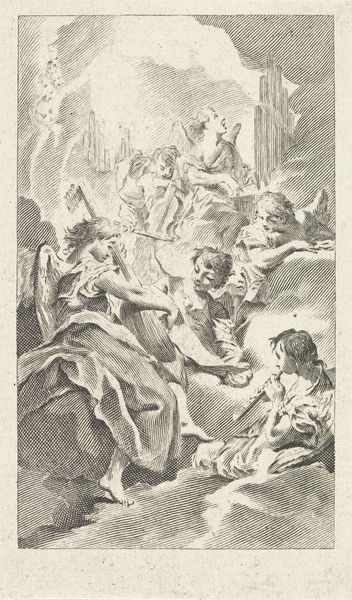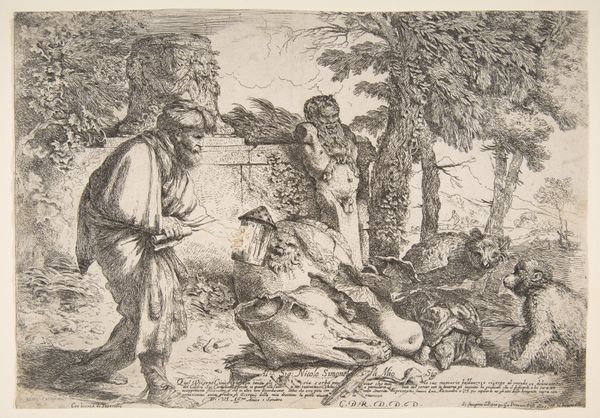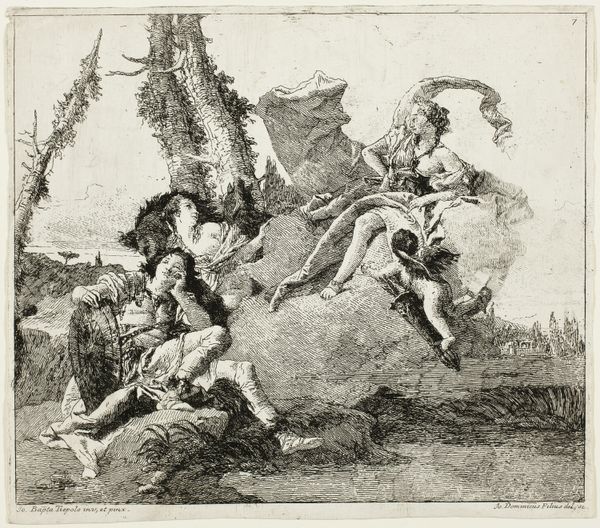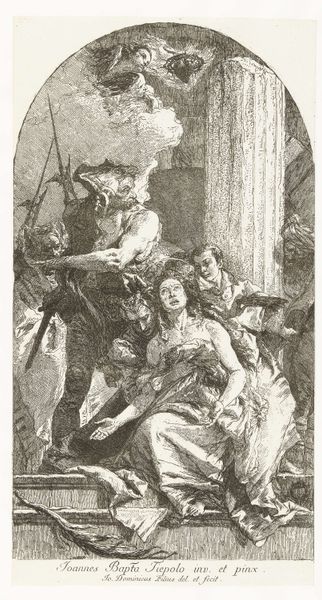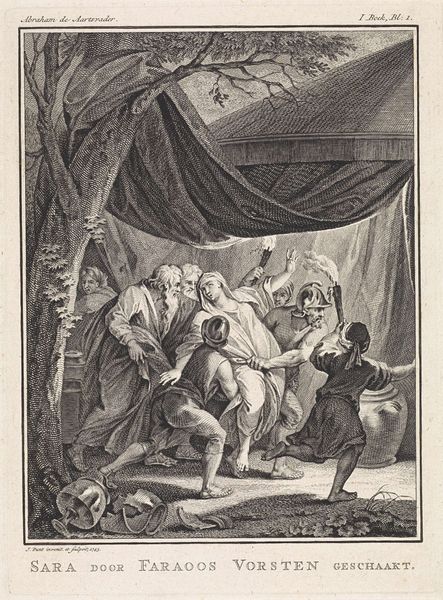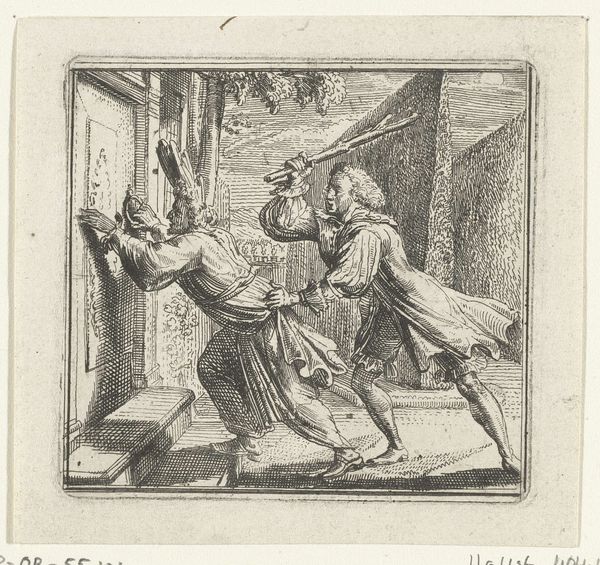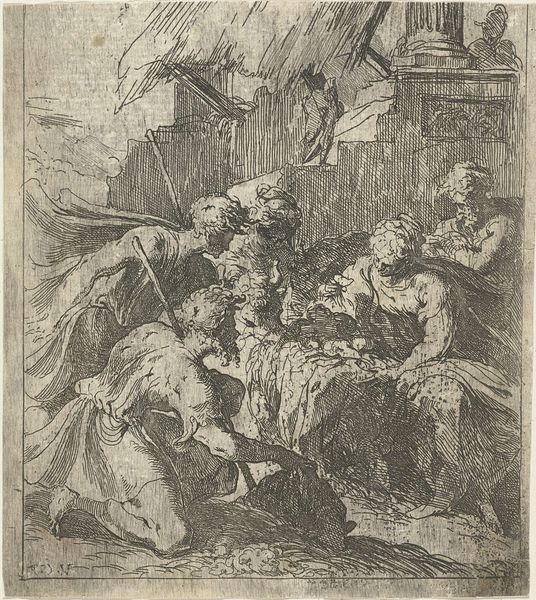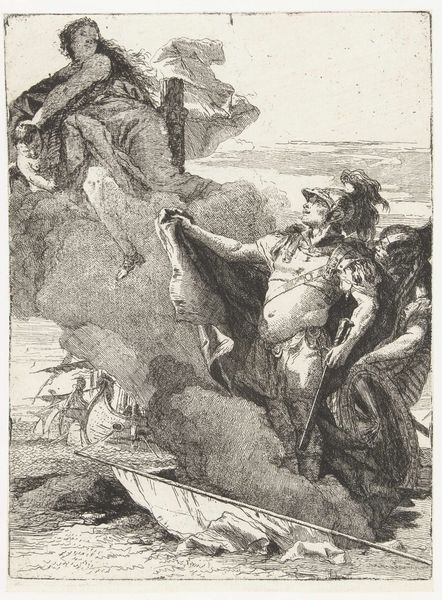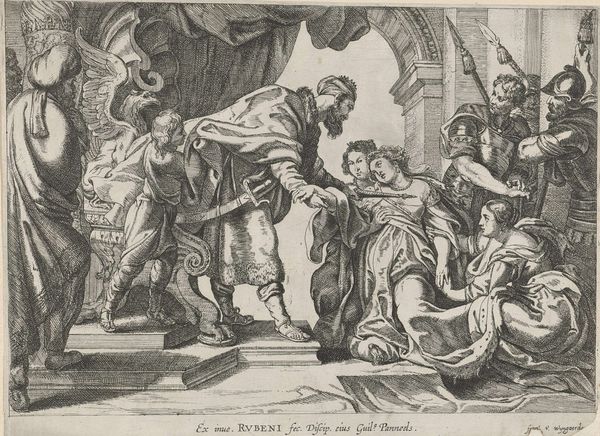
drawing, print, etching, ink, pen
#
drawing
#
baroque
# print
#
pen sketch
#
etching
#
pencil sketch
#
figuration
#
ink
#
child
#
pen-ink sketch
#
pen
#
italian-renaissance
Dimensions: height 200 mm, width 299 mm
Copyright: Rijks Museum: Open Domain
Curator: Ah, here we have "Woman with Three Children," a fascinating etching and ink drawing by Giovanni Domenico Tiepolo, crafted sometime between 1751 and 1755. Quite the glimpse into a past era, wouldn't you agree? Editor: It's got an unsettled energy to it. Almost chaotic, with that screaming mask and those frenetic lines, belying what should be a tender scene of motherhood. What do you make of it? Curator: Perhaps Tiepolo aimed to capture the beautiful, messy reality of motherhood rather than an idealized version. Note how the various textures and layers were built by deploying the pen across the printing plate. The way the etching bites into the metal, you know, gives each figure a peculiar sort of vibrancy. Editor: Indeed, the lines vibrate with life! There's an intriguing juxtaposition too. On one side, there’s this theatrical, grotesque mask overflowing with wealth. On the other, we have the children. The contrast suggests Tiepolo may be highlighting societal imbalances – those born into abundance versus the burdens carried by mothers and their young. What a complex printing plate would be needed to bring about this depth. Curator: I love your read on the contrast. It adds a new dimension to how I perceive it. The mask, perhaps, is a grotesque symbol of the structures pressing in upon this woman and her children? The baroque certainly lends itself to this layered perspective. I almost sense Tiepolo whispering: "Here, look closer at the everyday; it’s overflowing with symbolic drama if you bother to see it!" Editor: Precisely! And consider the role of printmaking itself –etching allowed for wider distribution, making this commentary accessible beyond elite circles. So the work becomes a powerful tool to broadcast more accessible political and social ideas through reproducible image-making processes. Each print struck for the artist, and the audience would bring with them unique value, use, and worth. Curator: I never considered it in that way. Viewing the piece as more than a standalone artwork but a form of distributed societal commentary! How profoundly it speaks to our own moment too. Makes you consider labor in today’s print landscape. Editor: Absolutely! It urges us to rethink value and access within art production, doesn’t it? And the endurance of certain human themes too, despite centuries between us and Tiepolo. What a journey.
Comments
No comments
Be the first to comment and join the conversation on the ultimate creative platform.

